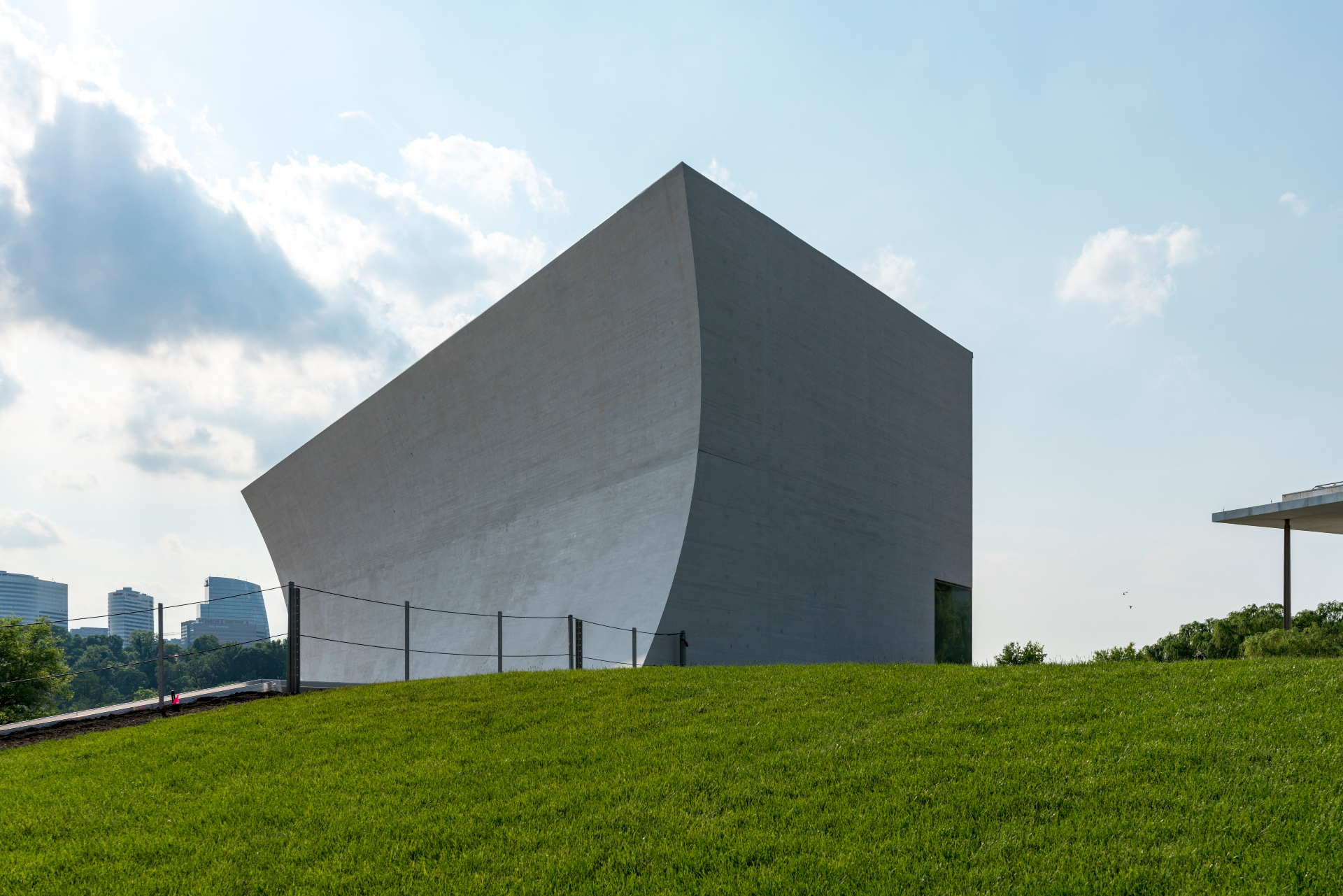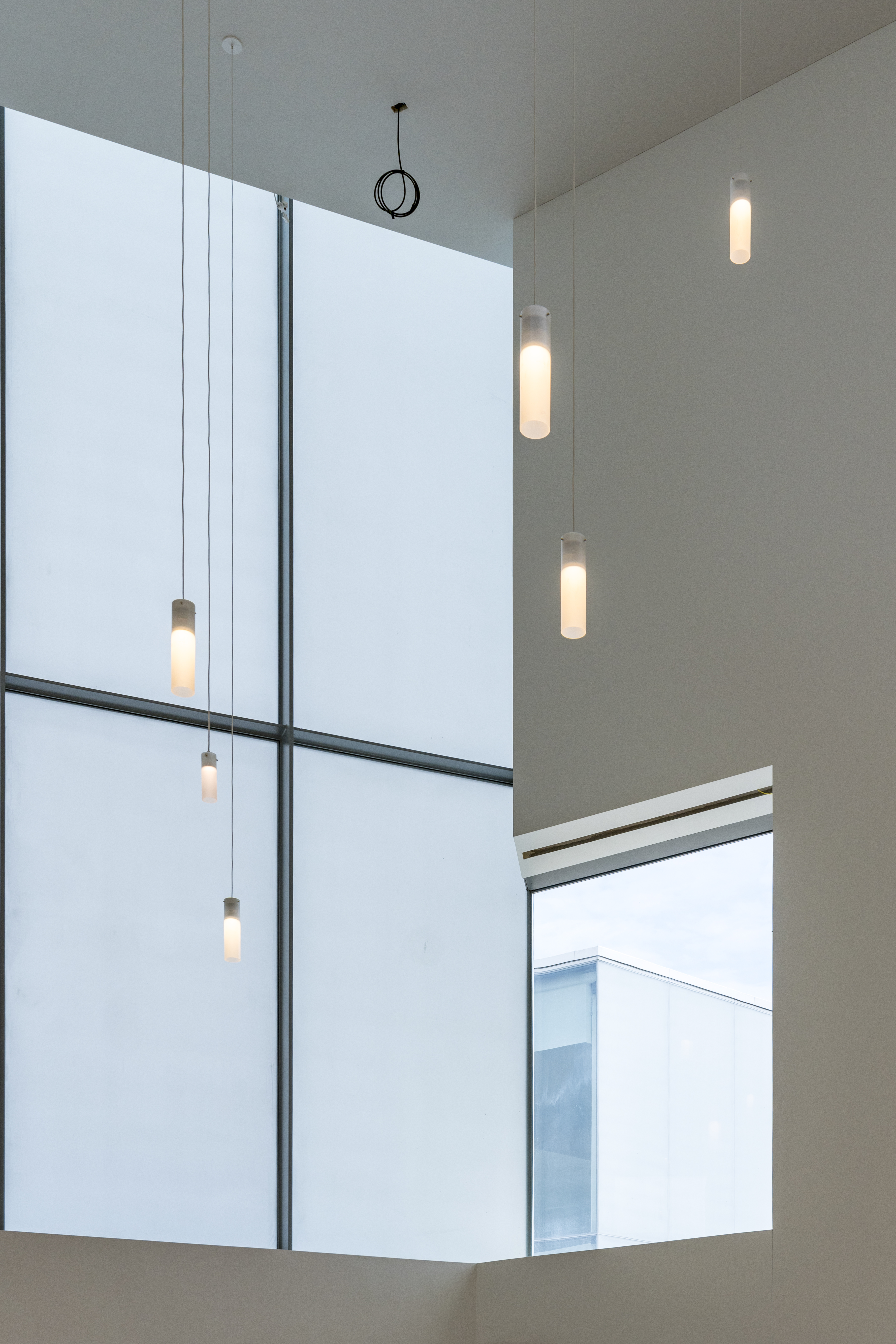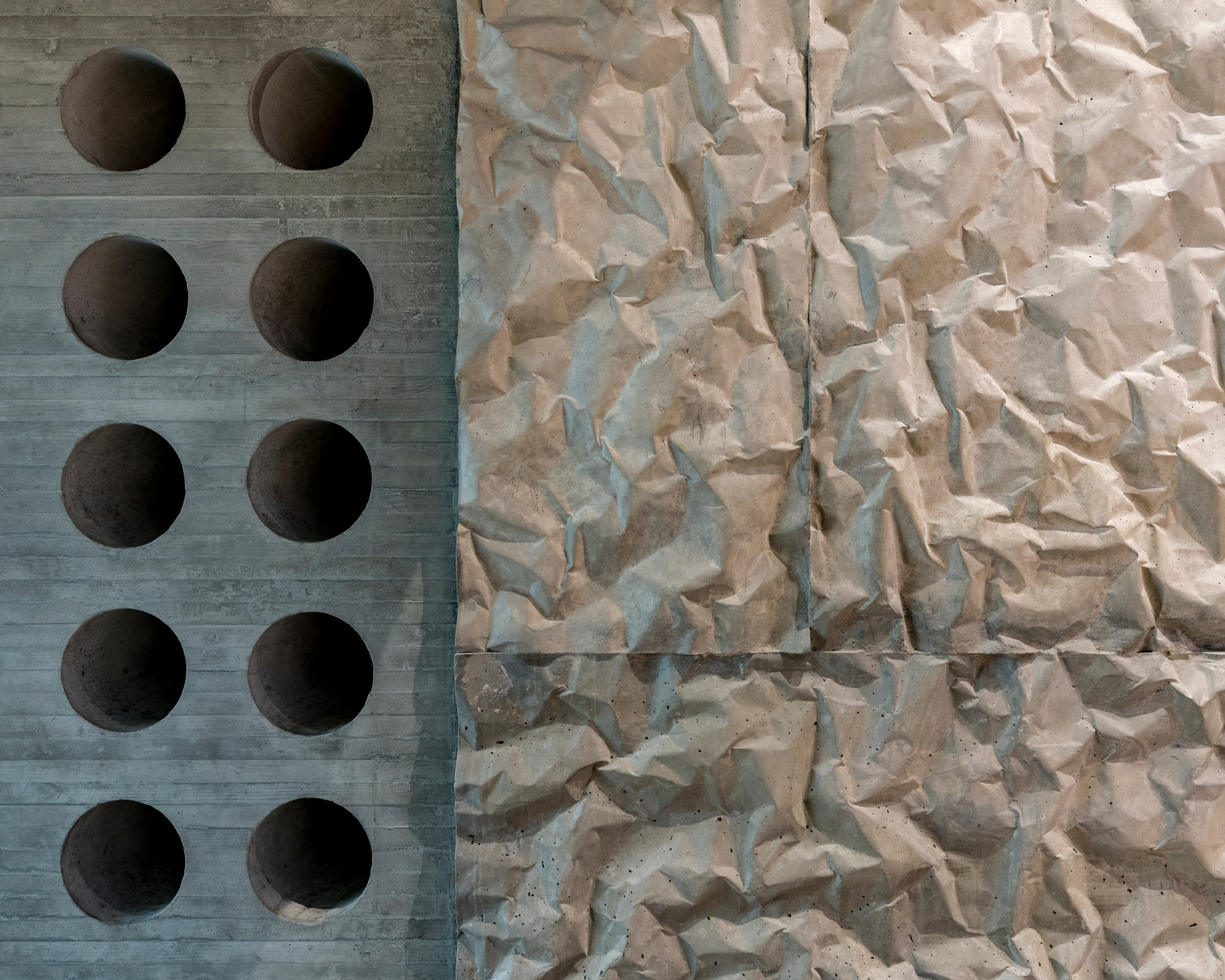Steven Holl Architects unveils the REACH at Kennedy Center in Washington

The Kennedy Center for the Performing Arts seeks to strengthen its position as a key cultural hub for the city of Washington, D.C., with the opening of a new expansion by Steven Holl Architects (SHA) with BNIM. Dubbed the REACH – as it aims to ‘renew, experience, activate, create, and honour' John F. Kennedy’s memory – the addition provides the Kennedy Center with 72,000 sq ft of extra interior space in the form of much-needed rehearsal studios and informal, intimate performance venues.
Three pavilions rise above the two sub-grade levels, with a publicly accessible lawn, Ginkgo grove and reflecting pool between them, designed by Hollander Design Landscape Architects, to reflect choreographed seasonality. A new bridge extends the REACH’s metaphor across Rock Creek Parkway, drawing pedestrians into the 4.6-acre campus to encourage citywide exposure to the arts.
The bridge is part of an effort to increase accessibility to the challenging Kennedy Center site, which is bordered on three sides by a highway, an on-ramp, and a parkway overlooking the Potomac River. Yet for all of that potential disruption, combined with flight traffic in and out of Washington’s Reagan National Airport, the riverside pavilions offer scenic views uninterrupted by outside noise.

Within several of the performance and rehearsal spaces, a new form of acoustic wall, which SHA calls ‘crinkle concrete', embeds peaks and valleys into the wall surfaces to minimize parallel surfaces that would cause unwelcome echoes. Developed in-house by architects Chris McVoy and Garrick Ambrose, this type of concrete relies on pounded metal to be coated in rubber, which then serves as the formwork for the concrete walls – all of which are also structural, making them both performative and performance friendly.
From the original, 1971 Edward Durrell Stone building, visitors to the REACH will enter a welcome pavilion. Its double-height lobby reduces to a low-ceilinged hall before releasing into a soaring space that Steven Holl describes as the Skylight pavilion, which features a Carlo Scarpa-esque moment in its northwest corner, and a southern wall that curves inward as it descends, meeting the ground with glass that follows the same bend.
‘The experiential aspect kind of overrides the intellectual, because a five-year-old needs to be able to walk into a building — like a five-year-old can listen to a piece of music — and become inspired by it', Holl says. ‘My ideas about the phenomenological aspect of architecture have always been a theoretical backbone of my work. And so I'm very proud that this project unifies all those things, but in a very much more important site and circumstance than I've ever worked'.
The Kennedy Center plans to open the REACH with a 16-day arts festival in September, featuring performances by local singers, dancers, musicians, and comedians. Many of these and future shows will be simulcast via projection onto the exterior of one of the pavilions, welcoming members of the public to become an impromptu audience in the REACH’s new outdoor venue.





INFORMATION
For more information visit the Steven Holl Architects website
Receive our daily digest of inspiration, escapism and design stories from around the world direct to your inbox.
-
 Click to buy: how will we buy watches in 2026?
Click to buy: how will we buy watches in 2026?Time was when a watch was bought only in a shop - the trying on was all part of the 'white glove' sales experience. But can the watch industry really put off the digital world any longer?
-
 Don't miss these art exhibitions to see in January
Don't miss these art exhibitions to see in JanuaryStart the year with an inspiring dose of culture - here are the best things to see in January
-
 Unmissable fashion exhibitions to add to your calendar in 2026
Unmissable fashion exhibitions to add to your calendar in 2026From a trip back to the 1990s at Tate Britain to retrospectives on Schiaparelli, Madame Grès and Vivienne Westwood, 2026 looks set to continue the renaissance of the fashion exhibition
-
 Step inside this resilient, river-facing cabin for a life with ‘less stuff’
Step inside this resilient, river-facing cabin for a life with ‘less stuff’A tough little cabin designed by architects Wittman Estes, with a big view of the Pacific Northwest's Wenatchee River, is the perfect cosy retreat
-
 Remembering Robert A.M. Stern, an architect who discovered possibility in the past
Remembering Robert A.M. Stern, an architect who discovered possibility in the pastIt's easy to dismiss the late architect as a traditionalist. But Stern was, in fact, a design rebel whose buildings were as distinctly grand and buttoned-up as his chalk-striped suits
-
 Own an early John Lautner, perched in LA’s Echo Park hills
Own an early John Lautner, perched in LA’s Echo Park hillsThe restored and updated Jules Salkin Residence by John Lautner is a unique piece of Californian design heritage, an early private house by the Frank Lloyd Wright acolyte that points to his future iconic status
-
 The Stahl House – an icon of mid-century modernism – is for sale in Los Angeles
The Stahl House – an icon of mid-century modernism – is for sale in Los AngelesAfter 65 years in the hands of the same family, the home, also known as Case Study House #22, has been listed for $25 million
-
 Houston's Ismaili Centre is the most dazzling new building in America. Here's a look inside
Houston's Ismaili Centre is the most dazzling new building in America. Here's a look insideLondon-based architect Farshid Moussavi designed a new building open to all – and in the process, has created a gleaming new monument
-
 Frank Lloyd Wright’s Fountainhead will be opened to the public for the first time
Frank Lloyd Wright’s Fountainhead will be opened to the public for the first timeThe home, a defining example of the architect’s vision for American design, has been acquired by the Mississippi Museum of Art, which will open it to the public, giving visitors the chance to experience Frank Lloyd Wright’s genius firsthand
-
 Clad in terracotta, these new Williamsburg homes blend loft living and an organic feel
Clad in terracotta, these new Williamsburg homes blend loft living and an organic feelThe Williamsburg homes inside 103 Grand Street, designed by Brooklyn-based architects Of Possible, bring together elegant interiors and dramatic outdoor space in a slick, stacked volume
-
 This ethereal Miami residence sprouted out of a wild, jungle-like garden
This ethereal Miami residence sprouted out of a wild, jungle-like gardenA Miami couple tapped local firm Brillhart Architecture to design them a house that merged Florida vernacular, Paul Rudolph and 'too many plants to count’